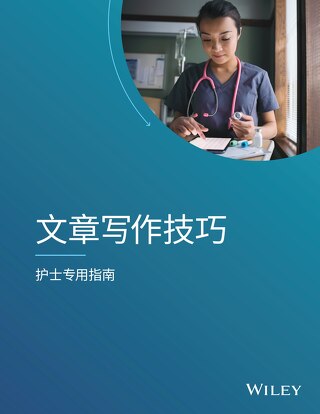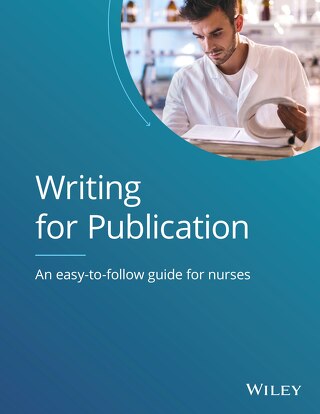10-oa-interviews-open-access-futures-predictions-for-the-next-10-years
October 21, 2021
To celebrate 10 years of Wiley’s Fully Gold, Open Access Program we approached a selection of some of our partners and colleagues to hear their first hand thoughts and experiences on the journey to open access.
This is the second of two interview series. Open Access Futures explores where the future of open access might take us in the next ten years. Open Access Stories looks back at the journey we, and many of our partners, have been on the past 10 years.
1. Do you remember when you first heard of open access? What were your initial thoughts on it?
2. How do you think your role will change with the growth of open access over the next 10 years?
3. What impact do you think open access will have had on the wider community 10 years from now?
4. What do you think the future of open access holds for people in your profession?
6. Sum up your feelings on open access to us in one sentence
Interviewees: Introduce yourself, tell us where you work, what job you do, and how open access relates to your role
I’m Andrew Smeall, a Senior Director in Liz Ferguson’s Open Research team. I joined Wiley in 2021 as part of the Hindawi acquisition. At Hindawi, my title was Chief Strategy Officer, and I was responsible for setting up Hindawi for continued growth. For a large part of my time at Hindawi, I worked on technology products, designing and building the Phenom platform Hindawi uses to run our Open Access journals. My entire career in publishing has been spent in Open Access. I first joined Hindawi in 2011, when it was still a fast-growing, independent publisher based in Egypt. As one of the early Open Access pioneers, Hindawi was very involved in establishing Open Access as a business model. We were founding members of the Open Access Scholarly Publishing Association and advocated for OA in important industry groups like CrossRef and STM. @mynameissmeall
My name is Arjan Schalken, I’m working for the Dutch consortium UKB as Program Manager. My work focuses on further improving both negotiating and managing Read & Publish deals. I’m also project manager of a national project to translate our Copyright Law into effective and efficient repository open access processes. Working towards 100% open access is an important part of my daily work. LinkedIn
My name is Simon Eickhoff, I am a professor for Systems Neuroscience at the Heinrich-Heine University in Düsseldorf and director of the Institute of Neuroscience and Medicine at the Forschungszentrum Jülich, both in Germany. I am also deputy editor-in-chief at the Wiley journal Human Brain Mapping, which two years ago flipped to gold-OA. @inm7_isn
My name is Vincent Cassidy, I am the Director of Research and Academic Markets at the Institution of Engineering and Technology. I am responsible for the publishing and knowledge transfer activities of the institution that support research and scholarly discourse, including journals, conference proceedings, books, databases, analytics solutions, and TV and media. Regarding open access, like all scholarly publishers our initial engagement was in a defined ‘experimentation’ phase, slowly but surely growing to become a significant part of our journal activity. In 2021 our strategy to commit to OA as part of our core mission became realized, as we flipped our hybrid journals to gold open access to create a leading portfolio of 43 engineering open access journals.
I’m Liz Ferguson, VP for Open Research at Wiley. Open access is the lion’s share of my role, and has been for about the past 5 years (before which it was probably about 50% of my focus, as was open data initiatives). I’m privileged to lead a fantastic team who develop Wiley’s policies and models, all of which are designed to accelerate and continually improve how we approach open access. The team works right across the Research and wider Wiley organization to do this, as well as engaging externally. Since January this year we have been delighted to have Hindawi join the Open Research team – further stretching our thinking and enhancing what we can offer authors, institutions and funders.
We’re incredibly grateful to our interviewees for giving their time to us. Their opinions are insightful, and we are thrilled to be able to share these here.
1. Do you remember when you first heard of open access? What were your initial thoughts on it?
Andrew Smeall: Open Access is one of the ideas that attracted me to work in academic publishing the first place. I wanted to work at Hindawi because Open Access looked to me like both an attractive startup business model and a better solution for the world.
Simon Eickhoff: While I can’t really remember, it most likely was during my dissertation. At that time, though, internet-based journal access was not as standard practice as it was nowadays. Also, I had to order many older articles anyways, which basically meant I was requesting anything that was not immediately available. Hence the distinction between OA and “closed” journals only became clear to me later.
Vincent Cassidy: In the early 2000s I was Marketing Director at Elsevier Health Sciences. I was aware of the Budapest Open Access Initiative, the Bethesda Statement and the Berlin Declaration around the time they appeared on the various listservs and began to be discussed at library conferences from 2003 onwards. I remember the talk as being ‘out there’ and on the periphery of our industry that was focused on scale and digital transition.
In terms of business models, at the time there was an industry focus on ‘big deals’, both as a transitional vehicle to digital, but also to provide more value to libraries and help with the perennial library funding issue. I was interested in the proposition that OA could be another tool to help to bridge the widening gap between research output and library acquisition budgets. The thought that it would become one of the primary routes to publication didn’t seem likely back in 2003-2005.
Liz Ferguson: At a university library in the Netherlands in the late 1990s during a visit for early career publishers. I think it was Leiden but may be wrong. The focus was largely on green, the significance of institutional repositories and the requirement to reduce institutional expenditure/deliver better value to institutions. At that time I didn’t see green taking a hold. It was a couple of years later that other forms of OA – especially but not exclusively gold, and the more general drive for it, started to embed itself more in my consciousness. By that time, I could see the promise but not how to deliver on it.
2. How do you think your role will change with the growth of open access over the next 10 years?
Andrew Smeall: Instead of making sure content is only consumed by a few people with access rights, we’ll be trying to make sure content is consumed as widely as possible. OA encourages aggregation, wide distribution, and consumption across many endpoints. Challenges like access and identity management on journal websites become simpler. However, making the content as discoverable and reusable as possible is tricky in other ways. We’ll still have many challenges in terms of implementing standards, creating interoperable APIs, maintaining integrations, and structuring content for reusability.
Arjan Schalken: At this moment the focus is on developing a set of sustainable open access instruments. The focus will shift to managing these instruments for an optimal result (impact, quality, compliancy, and cost efficiency).
Simon Eickhoff: I don’t think anything will change to be honest
Vincent Cassidy: My role has already changed! The change to open access has really focused our attention on the quality and value of our service to authors. While this has always been a key part of the publishing process it is increasingly a defining competitive advantage.
Open access has accelerated a structural change in our industry that began with digitization, a transition from publishing as a homogenous process driven activity to one driven by segmentation and differentiation, and much more like an FMG business. Over the next 10 years I think that my role will see a greater focus on understanding researcher workflows and specific needs across our diverse communities.
Liz Ferguson: While a number of the decisions and directions I’ve taken in the past about my role and that of my team have been very deliberate, at times the areas of focus have shifted without me really noticing. During the next 10 years I expect we’ll be increasingly driven by developing workflows and services that authors value and which continually make the process of communicating research more open, more transparent, more rigorous. I see continued emphasis on the evolving expectations and requirements of funders and policymakers. Despite the considerable progress of recent years, there is still a lot of the change curve to move along, and I see that taking an increasing amount of my time. This is all rather general but if I’d been asked this question 11 years ago (when I first really started working in OA) I doubt I’d have landed on an answer that looks even close to my role today.
3. What impact do you think open access will have had on the wider community 10 years from now?
Andrew Smeall: Changing researcher behavior is the biggest challenge in scholarly communications. The evaluation and funding models at research institutions are old and slow to change. We still have work to do with researchers and research funders to encourage researchers to try communicating in new ways. I’m optimistic that this will evolve over the next 10 years. 5 years ago, we still had to fight to convince researchers that OA content was peer reviewed. Today, OA is mainstream in many fields, and even where funding makes OA more difficult, OA is shifting the conversation around distribution models. Right now, new technologies are changing the static definition of an article and researchers are becoming comfortable with the benefits of sharing outputs openly. In 10 years, OA will be the norm in most fields. Journals will become less important as places to consume content and more important as distributors of content. Openly available, interoperable, reusable research outputs will make it easier to develop ways to evaluate research on impact and quality rather than through a proxy like the Impact Factor.
Arjan Schalken: The potential of openness is better access to and reuse of knowledge for researchers, education, professionals, and society. Quality, impact and cost-efficiency of scholarly communication could be improved. However, open access is a mean to these goals. the success will be determined by the stakeholders. If publishers see it as ‘just another business model’ and if researchers and funders merely look at being compliant then there is a risk that it will only result in increased complexity of the system and a shift in cost allocation.
Simon Eickhoff: The disparities will move from the consumer to the producer level. While previously it was hard for labs in the global south to access articles, it will not depend on adequate waiver models to make sure they can keep publishing.
Vincent Cassidy: I hope that the availability of peer reviewed research will have a broader societal benefit over time, for example, the availability of OA content during the COVID pandemic has stimulated more informed discussion about public health and vaccination. I believe that more access to reputable and verifiable science and research is more likely to result in effective action on issues like climate change and sustainable development.
Liz Ferguson: We’re still in the early stages of seeing the many benefits OA will deliver. We’ve recently provided a whitepaper that shows some of the advantages when viewed from some very important metrics from the researcher’s perspective: usage and citations. Getting research into the hands of all those who can use it or otherwise benefit from the knowledge they acquire will undoubtedly deliver a great many more benefits. There are lots of specific examples and probably not enough space to go into them here, but openness under the right licenses that allows distillations of very complex, detailed research papers at scale for policymakers, practitioners, patient advocacy groups feels particularly important to me.
4. What do you think the future of open access holds for people in your profession?
Andrew Smeall: At a high level, the job of a publisher is not going to change: we will still be responsible for priority, quality, distribution, and preservation. As an industry, I believe we’re coming out of the disruptive era of OA, and the next few years will be a period of consolidation. As OA becomes more centrally funded by institutions and governments, this will benefit big publishers who are good at managing large B2B relationships.
On a day-to-day basis, the opportunities enabled by OA mean we’ll have lots more work to do on processing and wrangling data. Journal publishing will become less about moving static documents from place to place and more about extracting data from documents so that it can be reformatted and consumed in multiple ways. We’ll need new workflows to evaluate, share, and preserve ever more complex data and software artifacts, and we’ll need to develop ways to screen and triage new types of content to ensure quality.
Simon Eickhoff: Quite frankly, it will be the norm sooner rather than later. The bigger, more interesting question is, whether traditional journals will stay in existence or get replaced by “overlay journals” on arxiv.
Vincent Cassidy: Change in any profession or industry represents an opportunity to keep learning and an opportunity to grow. For learned societies I believe that open access represents an opportunity to restate our service to our communities.
Liz Ferguson: I’ll keep this one short. OA has made the roles of many people within the publishing industry considerably more interesting in recent years. I’m not even sure I’d still be in publishing if it weren’t for the big thinking, challenging decisions and dynamic environment it has presented. As OA becomes an even larger part of our present and future, I fully expect these opportunities to present themselves to increasing numbers in the industry (and per my earlier comment about the change curve, it’s the responsibility of some of us to deliver those).
5. What problems relating to open research (from the perspective of your role) would you like to be solved in the near future?
Andrew Smeall: I would love to see us upgrade or replace the current generation of publishing infrastructure technology that is now 15–20 years old. The generation of platforms we’re using today emerged as publishing first moved on the web in the early 2000s. They were great innovations then and they’ve served us well, but they’re reaching the end of their lives. We’re not short of new ideas in user experience, workflows, machine learning, data management, and content delivery, but outdated plumbing is holding back our renovation. I’d like to leave publishing infrastructure better than how I found it.
Arjan Schalken: At this moment open access publishing stands alone from the research process itself. Open research asks for a more integrated and flexible system of continuous communication where the research community is in control of communication process including ‘formal’ output like publications. In such a future, libraries, publishers, platform providers, and other stakeholders provide added value to the research community.
Simon Eickhoff: Currently cost is a major issue, in particular since money that previously went to journal subscriptions is not readily available for authors to cover APC
Vincent Cassidy: There is still a lack of awareness in our research communities of the benefits of OA and still a residual belief that OA publishing is somehow of a lower quality. I would like funding bodies, research institutions, and other stakeholders to work harder on changing these perceptions.
Liz Ferguson: My answer boils down to two very straightforward wishes that are less than straightforward to deliver on. One is that we break research communication out of the constraints of an article to become much richer – all or at least many more of the artifacts of research in the public domain, earlier sharing, demonstrable rigour and integrity, greater and broader evidence of impact. The second is to offer the workflows and content in environments that are fully enabled for openness from beginning to end. If we get those two things right, we’ll find many more researchers embracing what open access and open research practices can do for them, and as publishers we demonstrate greater value in the services and outcomes we deliver to them and those who support them.
6. Sum up your feelings on open access to us in one sentence
Andrew Smeall: Open Access to research produces better outcomes for society.
Simon Eickhoff: OA will soon be the norm so it less about “whether” but more about “how”
Vincent Cassidy: Open access is an opportunity for us to get closer to our research communities and engineer a better world.
Liz Ferguson: Can I use the words of my esteemed new colleagues at Hindawi? ‘Science works best when research is open’.












